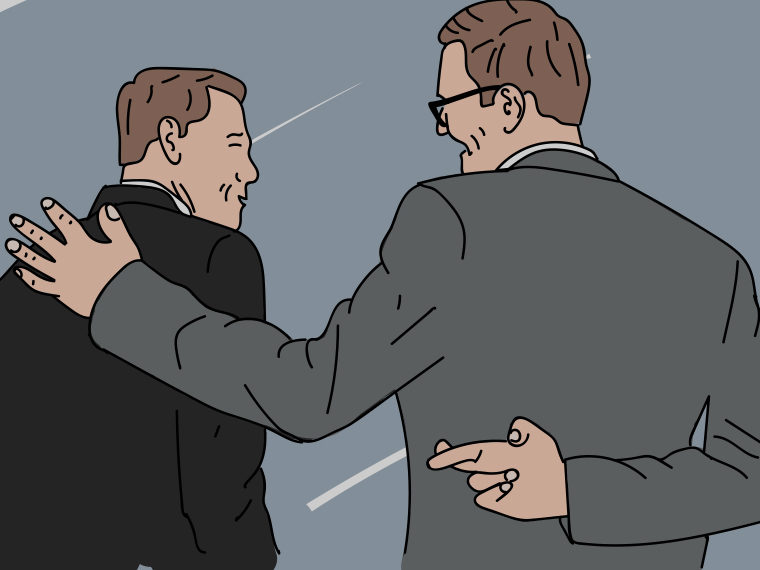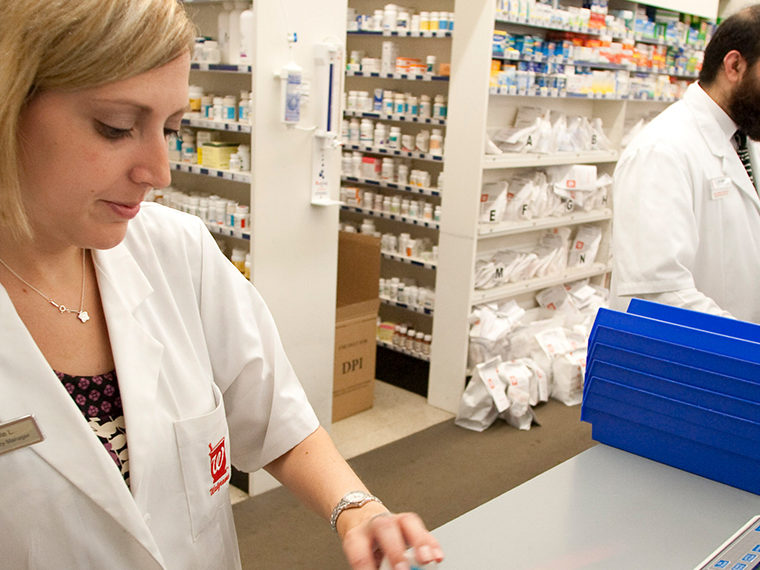Hal Hershfield’s book offers research-backed methods to build a healthier, happier, more financially secure life
Is the future — your future — freaking you out these days?
Worldwide, humans are just beginning to grapple with the onset of global warming and, with much resistance, the enormous changes in behavior — how we get around, what we eat, where and how we live — that will be required in a hotter and more disrupted world.
And here in the U.S., unusual among wealthier countries for how many essential and complex choices are loaded onto individuals — health insurance plans, saving for retirement, how to pay for higher education — balancing an individual’s or family’s needs in the present against longer-term considerations is a source of enormous angst up and down the income scale.
Opt In to the Review Monthly Email Update.
Making the wrong choice — opting for the cheapest health insurance, for many; taking Social Security at 62; borrowing heavily for college — can have disastrous and at times irreversible consequences.
Indeed, choices made today may matter more than ever for your tomorrow, though it’s well established that, for many of us, thinking about or acting on behalf of our future selves runs a distant second to gratification in the here and now.
UCLA Anderson’s Hal Hershfield has spent nearly two decades researching our relationship to our future selves and devising methods — nudges, workarounds, tricks and more — to help us make decisions now that will be kinder to the older versions of us. His book, Your Future Self, is filled with actionable methods, backed by his own and other academics’ research, and with a generous understanding of what it means to be a human, facing the future, right now.
Who’s That?
An early project helped confirm to Hershfield that people are too little in tune with their future selves. Research published in 2009, using fMRI brain scans, found that participants tasked with thinking about themselves years into the future produced brain activity very much like thinking about a stranger.
Clearly, that won’t do. “In a variety of ways we see our distant selves as if they are other people,” Hershfield writes. “By strengthening the connections between our past, present and future selves we can gain a new perspective on what is important — and help create the future we want.”
So Hershfield went to work trying to get people better acquainted with future versions of themselves:
Literally, look at your future self, using apps such as FaceApp or SnapChat’s aging filter, which convert a photo of today-you into old-age you. Hershfield and colleagues exposed one group of undergraduates to a virtual reality mirror with an aged reflection and afterward asked, among other things, what they’d do with a $1,000 windfall. Those who saw their older selves allocated more to savings. Re-run on working adults, “grayer hair, wrinklier skin and age spots again won the day,” Hershfield reports; those glimpsing their future selves, in a survey, put aside three times as much as those who did not.

The aging apps have become widely employed. Merrill Lynch created a Face Retirement website where users could upload pictures and see 60 years into the future. Prudential introduced “Future You” aging booths at employee benefit fairs in the hopes of increasing benefit participation.
College student Anmol Bhide, who gained 30 pounds during the COVID-19 pandemic, emailed Hershfield, after reading about the research, to say he’d taped a futurized photo of himself to the refrigerator door. “Whenever I would go downstairs to grab a Häagen-Dazs bar, I would see that visualization and walk back upstairs,” he wrote.
Might ethical choices be influenced, too, by confronting one’s older self? Hershfield and colleagues, placing 40-something-year-old images on the Facebook pages of high school students found the youngsters slightly less misbehaving that week. And Hershfield’s collaborator, Jean-Louis van Gelder, began showing convicted Dutch offenders aged photos of themselves.
Write a letter to older you or, better yet, from future you. In another Hershfield study, participants who wrote a letter to themselves 20 years down the road exercised more than participants who wrote to themselves 90 days off. And there’s an app for this: 20 million letters have been submitted to the FutureMe website, which allows users to schedule delivery of their missive. Try out a customized version here.
Letters to later-you have also proven helpful in spurring savings and in moderating emotional distress during the COVID-19 pandemic.
A letter from 60-, 70-, 80-year-old you to your current self can have an even bigger impact. Hershfield calls it “reverse time travel,” and one study he co-authored found that mindset, too, could help boost savings.
Taking time to contemplate what you think you might regret, or most value, in how your life evolved could help encourage actions today that you expect will help future you look back with more contentment. Re-read those letters whenever you are in goal-setting mode, deciding if you will save more, spend less or embark on a healthier exercise and diet regime.
Take the hard stuff off your plate using pre-commitment methods. These involve agreeing to do something — attend a workout class, say — ahead of time. Sometimes the pre-commitment is made for us. Hershfield notes Hernan Cortes’ extreme example — scuttling his army’s ships in 1519 to make certain his troops wouldn’t try to retreat during their invasion of Mexico.
Less dramatic is today’s long-overdue norm: Nearly 60% of workplace retirement plans automatically enroll new employees, according to Vanguard. For those plans, 3 out of 4 report that at least 90% of employees don’t opt out.
You can apply this lesson elsewhere. Automate a weekly or monthly deposit from your checking account to your emergency savings account or for an IRA.
Removing temptation is a form of pre-commitment. Hershfield writes admiringly of Dave Krippendorf, an avid snacker, who invented the Kitchen Safe, with a timed lock to dole out his treats. And Hershfield has one himself — to lock away his smartphone during family hours at home so he isn’t checking it constantly.
Break it down into small wins. Saving $5 a day, $35 a week or $150 a month is roughly equivalent. Yet in a field experiment, four times as many people agreed to save $5 a day than those who committed to save $150 a month.
“But the daily framing did more than just increase sign-ups,” Hershfield writes. “It also helped address something known as the “income savings gap,” where less wealthy people have a harder time socking money away simply because they have less of it. “Despite this strong tendency, we found that when the plan was framed in terms of dollars per day (compared with dollars per week or month), the income savings gap closed: Lower-income and higher-income consumers signed up at the same rate.”
Going small works best when you are just starting out on a goal, Hershfield notes. Research finds that as you get near the goal, it can be more motivating to focus on how far you’ve come to push you to the finish line. For example, not excited about the 30-minute run you know would be good for current and future you? Focus on making it through the first five minutes. Then the next five. But then somewhere around the 20-minute mark, you might find it more motivating to tell yourself you’ve just got 10 minutes to go.
To avoid over-spending, be on high alert for how retailers are way ahead of you on this small-ball approach. Buy-now-pay-later offers at checkout that divide the price into four or more palatable payments play on the same psychology.

Layer in some accountability. Sitting down for lunch with a pal one day, Hershfield was intrigued when his friend snapped a photo of what he had packed for that meal. Turns out the friend was working on losing weight — a very kind goal for one’s future self — and focusing on healthier food. The photo was for his nutritionist who sometimes chimed in with feedback. That’s accountability.
Accountability coaches (or partners) can be professionals or friends. The key is to share a goal and commit to sharing your progress on a frequent basis. Or consider the StickK.com website — developed by academics — on which you lay out your own personal commitment contract for whatever goal you want to work on. Users who rope in someone to serve as their “referee” are twice as successful at reaching their goals — lose weight, stop smoking etc. — than those who don’t.
Tempt yourself toward desired behavior . . . or threaten yourself. Wharton’s Katy Milkman came up with the sneaky smart nudge to pair good-for-you drudgery with something you love. Study participants, who agreed to only watch a movie or listen to an audiobook when they were at the gym, were more successful at keeping a workout schedule.
Or punishment may motivate you. A 2010 study had participants who quit smoking agree to set aside some savings in a separate account and to agree to donate some of their savings to charity if they started smoking again. Quitters facing this penalty were less likely to backslide.
A recent working paper studied more than 17,000 “commitment contracts” made on the Stickk.com platform. Less than one-third set up a commitment whereby they would lose money if they failed to reach their goal. But those who did were 60 percentage points more likely to succeed at their goal than people who did not.
The very practical applications of Hershfield’s research are so evident that it would be easy to miss its potential to improve relationships and to consider the life-long emotional well-being that can come from considering one’s future self.
Hershfield cops to personally being a “chronic avoider of conflict.” Suppose something’s bugging you about a loved one, friend or co-worker. Confronting them could be painful. But avoiding the topic might very well cause a minor problem to become a major one. Having that difficult conversation now is a gift to your future self — and hopefully to your friend’s future self, as well, Hershfield writes.

Likewise, for those enduring intense hardship, their future selves may appreciate them both acknowledging that pain and also appreciating what’s still good in life — the embrace of mixed emotions. Working with Jon Adler, who’d tracked patients undergoing psychotherapy, Hershfield examined journals the patients had kept.
“The patients who experienced more of a mingling of happiness and sadness from one session to the next were also the ones who showed the most significant improvements in psychological well-being,” they found. “This suggests that well-being isn’t just about chasing happiness — it’s about learning to find glimmers of joy and pleasure even in our more difficult moments.”
The daily stresses of life, for many of us, are sufficiently overwhelming that finding time and energy to contemplate more existential questions may seem impossible. Beginning a conversation with your future self, however, might just open the door to those concerns.
Featured Faculty
-
Hal Hershfield
Professor of Marketing and Behavioral Decision Making
About the Research
Hershfield, H. (2023). Your future self: How to make tomorrow better today. Little, Brown Spark.







